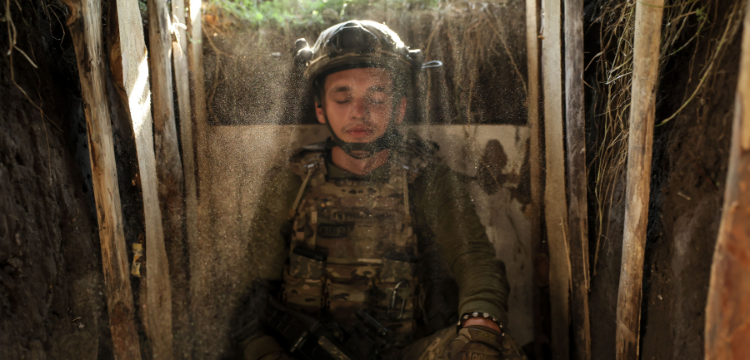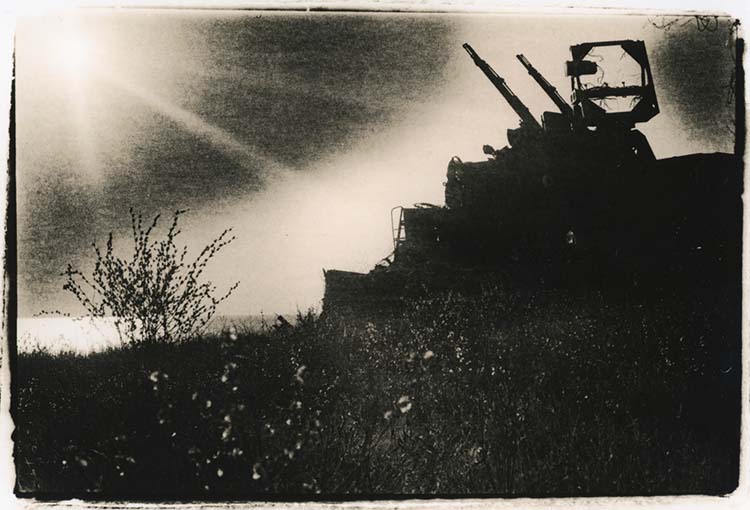A place that was not on the map, but was in hell
Sednaya prison was one of the most famous prisons of the Bashar Assad regime. It was popularly called the “country house of the uncle” or “the meat grinder for the people.” Any mention of this place, even in informal conversation, could result in arrest and imprisonment. Built in 1986, it was used to hold political prisoners, military personnel and civilians suspected of opposing the regime. According to Amnesty International, there could be between 10,000 and 20,000 prisoners in Sedna at the same time. It has gained a terrible reputation due to systematic violations of human rights. Former prisoners have testified to brutal torture, sexual abuse and mass executions.


This prison has existed in the shadows for decades. It was only after the overthrow of the regime that it became possible to learn about what was happening behind its walls. On December 8, 2024, the rebels liberated the prison. Among those rescued were men, women and children, many of whom had spent years in prison. The liberation of Sedna became a symbol of the fall of the dictatorship. Now this place, which was never on maps, has become the place where people return to find answers, feel the past, and try to understand what happened.

Photojournalist of the Public, member of the UAPF Oleksandr Magula visited Syria in the first weeks after the fall of the regime. His photo project “Ghosts of Sednaya” is a documentary account of this place of death. Magula himself writes about Sednaya as follows:
“In this place, the mountain wind blows madly, the doors of empty chambers growl and moan, drops of water slowly fall from the ceilings. Tens of thousands of people will never return home from the “uncle's country house”. An inscription on the door of one of the chambers reads: “The Syrian people will not be humiliated. The Revolution of Freedom and Dignity has triumphed,” indicating that ““The Human Slaughter” is closed forever. Only ghosts and people who do not give up hope come back every day to try to learn something about each other. People wander hopelessly through the corridors of Sedna, someone relentlessly flips through security magazines, hoping to find information about relatives who disappeared many years ago. Someone collects clothes from prison cells, because ghosts do not need clothes. From time to time, prolonged gusts of wind cut children's laughter. Syrians are taking children to Sedna to show the horrors of the regime in the hope that they will understand something and in the future will not allow the ghosts of the past to engulf Syria again. Darkness falls on the mountains, the wind gets even stronger, people quickly leave Sedna to come back here again the next day.”
Today, the Ukrainian Association of Professional Photographers publishes a black and white photo series”Ghosts of Sedna” by Alexander Magula— documentary evidence of the fall of the regime, whose shadow still hangs over these walls.

“Sednaya is a concentration camp. It was surrounded by minefields, guarded by the military, had fences four meters high. It was a fortress — a place where the processes of torture, murder and concealment of crimes were honed for decades.”— says Alexander.
Located 30 kilometers from Damascus, the prison remained officially “invisible”. It was not listed on the cards, did not appear in the documents. It just existed — like a black hole where people disappeared.
In December 2024, the remains of the dead - 35 bodies and several packages with human remains - were discovered in Sedna. The bodies of the dead were taken to Al-Mujtahid Hospital in Damascus. Ayman al-Harash, the chief physician of the facility, who himself spent 20 days in prison on charges of “terrorism”, said that most of the bodies had traces of brutal torture. Some were executed just days before the storming of the prison by opposition forces.

Sednaya was not just a place of imprisonment — it was a well-established death factory. Horrific methods were used for execution — people were electrocuted, dissolved in acid or crushed under presses. According to estimates of human rights activists, more than 30 thousand people were executed in this prison. The families of many of them never learned of their fate. Torture was put on stream here. Prisoners were forced into absurd and inhuman abuse — they were forced to run on the wet floor in the shower, where the weakest fell and immediately died under the blows of batons. They were fed only one olive and a glass of water a day.
“It reminds me of the Holocaust,says Alexander. — Not in scale, but in terms of mechanics. They had a murder system.”

Ruins of the regime: what do Syrians feel?
Do Syrians realize the tragedy of their people when they enter these walls? How do they perceive this place? Alexander Magula draws parallels with Auschwitz, where Jews go to mourn the victims of the Holocaust. But in the case of Syria, the situation is different.
“I think they have a completely different perception of reality. They are not the people who globally reflect on what has happened. We Ukrainians had an existential threat — we all realized at the same time that Russia wanted to destroy us. In Syria, things are different. This is a very strict people. They are constantly fighting. They do not sit and say, “God, what a horror.” They smile, rejoice at the attention of journalists. Children run, play. I think they are so used to and tired of the war that they have forgotten what a normal life can be like,” Oleksandr says.

After the fall of the regime, the prison became for the locals a “museum” of dictatorship. They come there with whole families, dress festively, explore the cellars, photograph the ruins.
“Sednaya for them is now a symbol of victory over the regime. They can go there, walk, see inside. No one will do anything to them.” The photographer shares.
“Ghosts” in death chambers
Alexander worked in Sedna for two days. The second day was a moment of rethinking:
“When we arrived, the weather was cloudy, the wind was strong. There were fewer people. I have already digested everything from the first day, watched people mindlessly wander through the cameras, looking for at least some information about their loved ones. And then I realized, these people are ghosts.”
Women in black coverings wandered through the cameras, the wind penetrated the curtains of the prison walls, everything mixed with the echoes of voices.

“People walk, look for something, collect some things, shoot on phones. They spend time in prison aimlessly, to no avail. They are either looking for someone they can no longer find, or they are trying to find a note with the name of the person who was executed.”— recalls Alexander.
According to the photographer, it was then that the name of the project was born — “Ghosts of Sedna”.
Survivors: The Story of a Prisoner
One of the heroes Alexander met was born in the city of Dar'a, where the revolution began in 2011.
“Schoolchildren wrote something like 'Doctor, go away' on the school fence, referring to Bashar al-Assad. The police arrested them and tortured them. When parents came to pick up the children, they opened fire on the crowd. This is how the civil war began.”— says Alexander.
The man fought in the Free Syrian Army, participated in protests, and then ended up in Sedna.

“He went through sexual abuse, through beatings. The prison wardens were incredibly resourceful. They, for example, spilled soap on the floor in the shower. If you fell, you were beaten with sticks.”
The man survived. But, as Alexander says, it was no accident:
“When you know from the age of five how the Kalashnikov machine is understood, and you only have three classes of education, then you have a better chance of surviving in this prison.”

What happened to the executioners?
After the fall of the regime, a logical question arises: where did those who tortured, killed, guarded this concentration camp go?
“The Assad regime fell in December 2024. All these people dissolved. Someone hid in Syria, someone fled abroad. Someone was executed.”— says Alexander.
There are communities that are still looking for Sednaya overseers.
“I am subscribed to several telegram channels that publish their photos. They are looking for them,” the photographer confirms.

The earth is as if soaked with blood
Despite everything he has seen, Alexander says that Syria is a place that fascinates:
“It is very sad that this country is so full of violence, but it is incredibly beautiful. People are hospitable, warm. If you enter the house without money, the landlord will borrow from a neighbor to feed you.”
The Syrian land also seems symbolic.
“The clay here is red,” says the photographer. “When you look at it, it seems that it is soaked with blood. Even the trees there are sloping, growing at a certain angle, as if they too can no longer stand flat and withstand this war.”



And although Sednaya remains a terrible reminder of the past, Syria remains alive.
“I would go back there more than once. Because this is the place where you want to shoot every second.”— concludes Alexander.

Oleksandr Magula — photographer from Kharkov, Ukraine. Journalist Social News in Kyiv. He studied journalism at Kharkiv National University named after V. N.D. Karazin. Before the war, he worked in the local media. Collaborated with the largest German-language print publications in Europe (NZZ, FAZ, TAZ, Focus, DerStandard). Photographer's social networks: Instagramand Facebook
The material was worked on:
Researcher of the topic, author of the text: Vera Labych
Picture editor: Olga Kovalyova
Literary Editor: Julia Foutei
Site Manager: Vladislav Kuhar




.jpg)

















